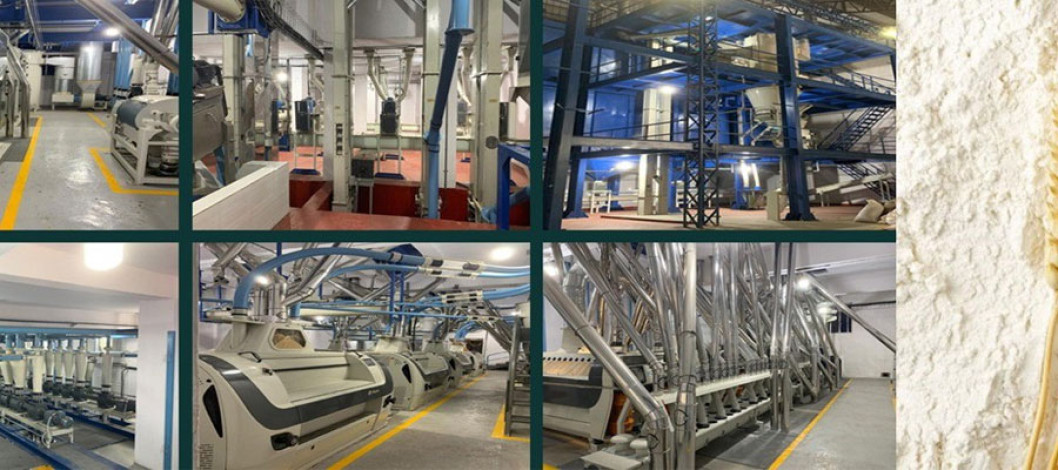
The flour milling industry in Bangladesh has become a pivotal part of the country’s food sector. With an increasing urban population, rising disposable incomes, and growing demand for processed and branded flour, the industry is experiencing a significant transformation. Traditional mills, which often rely heavily on manual labor, are gradually facing challenges related to efficiency, quality control, and consistent production. Automation—through modern machinery, computer-controlled systems, and intelligent monitoring—has emerged as a solution that can redefine productivity, quality, and operational efficiency. For global technology manufacturers, this evolving market represents a substantial business opportunity.
1. Overview of Bangladesh’s Flour Milling Industry
Bangladesh imports approximately 2–2.5 million tons of wheat annually to meet its domestic demand, as local production is insufficient. The wheat is processed into flour by small, medium, and large mills:
1. Small mills: Daily capacity of 1–5 tons, primarily serving rural or small-town markets.
2. Medium mills: Daily capacity of 5–20 tons, supplying urban areas and wholesale markets.
3. Large mills: Daily capacity above 20 tons, producing branded flour for retail chains and supermarkets.
Challenges faced by the industry include:
*High dependency on manual labor.
*Inconsistent quality and output.
*Aging and inadequate machinery.
*Energy inefficiency and high production costs.
Grain Tech Bangladesh 2025 (Exhibition & Conference)
2. The Role of Automation
Automation is the use of technology to control production processes with minimal human intervention. In flour mills, it can transform every stage—from cleaning and milling to packaging and quality control.
Key benefits of automation include:
1. Increased production efficiency: Automation can significantly increase output while reducing processing time.
2. Consistent quality: Computer-controlled systems ensure uniform flour quality.
3. Reduced labor costs: Fewer workers are needed, lowering operational expenses.
4. Energy and resource optimization: Modern machines use energy efficiently and reduce material waste.
5. Continuous operation: Automated mills can operate around the clock, ensuring steady production.
3. Modern Flour Milling Technologies
Global technology manufacturers offer advanced systems to modernize flour mills. Key technological advancements include:
(a) Cleaning and pre-processing automation:
*Sensors and machines remove dust, stones, and other impurities.
*Automatic feeding systems deliver wheat in precise quantities.
(b) Milling automation:
*Adjustable speed and pressure controls ensure optimal flour quality.
*Pre-programmed settings allow the production of multiple flour types.
(c) Packaging automation:
*Automatic weighing and packaging for consistent product delivery.
*Automated labeling and branding improve market appeal.
(d) Quality control automation:
*AI and computer vision monitor color, texture, and grain size.
*Defective flour is automatically removed.
4. Challenges to Automation in Bangladesh
Despite its benefits, automation adoption in Bangladesh faces hurdles:
*High initial investment: Modern machinery and software are expensive.
*Skill gap: Skilled technicians are needed to operate and maintain automated systems.
*Infrastructure limitations: Reliable electricity and stable environments are essential.
*Maintenance and support: Regular servicing requires trained staff or international support.
5. Business Opportunities for Global Technology Manufacturers
Automation adoption opens lucrative opportunities for international technology providers:
*Market expansion: Even small and medium mills are potential clients for automation solutions.
*Export potential: High-quality, automated mills can produce branded flour suitable for regional exports.
*Service and maintenance contracts: Technology providers can offer installation, training, and ongoing support.
*AI and software solutions: Demand for smart monitoring, predictive maintenance, and production analytics is rising.
6. Future Outlook
The future of Bangladesh’s flour milling industry is closely linked with automation:
*Hybrid systems: Semi-automated mills for smaller operations.
*Smart energy management: Reducing power consumption with intelligent systems.
*AI-driven optimization: Real-time monitoring and predictive adjustments for consistent quality.
*International collaboration: Technology partnerships can accelerate modernization.
Automation is not just a technological upgrade for Bangladesh’s flour mills; it is a strategic necessity. By embracing automation, mills can enhance productivity, ensure quality, reduce operational costs, and position themselves for regional and international markets. For global technology companies, Bangladesh offers a rapidly growing and untapped market for innovative milling solutions.
Milling Technology Trade Show
Source: Online/GFMM
Comment Now